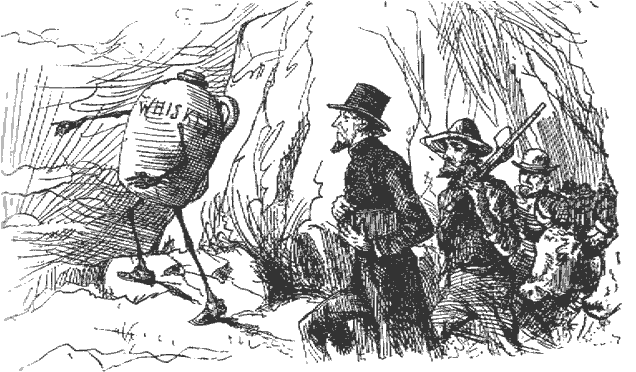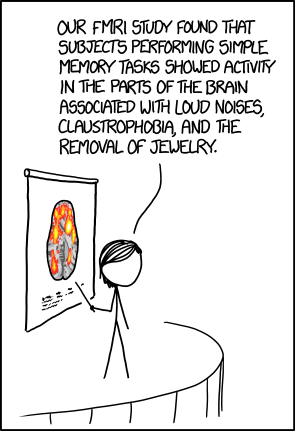I have got to clean out my draft folder.
This is a post about a fluff piece about a 25-year-old bubblegum movie. Suffice it to say, the point of diminishing returns is fairly close, but still this "All Things Considered" piece on the anniversary of
Back to the Future provides a too-good-to-ignore example of some of the issues we've talked about involving journalism and technology.
Specifically the issues are treating weak indications of progress the same as strong indications, rearranging chronology and not doing background research.
When we talk about the march of technology, how exactly do we know when something has arrived? We could make the case for various standards ranging all the way from the very strict (the technology is in wide use and has stood the test of time) to be very lax (people are talking about maybe doing it someday). Whatever the standard, we need to be self-aware and consistent.
This exchange from a recent All Things Considered
story about flying cars and hoverboards illustrated the questionable way journalists often treat prototypes.
[LOURDES] GARCIA-NAVARRO: Not quite standard issue as predicted, but the idea may not be so far off. A company called AeroMobile [sic*] successfully tested a two-seater car-airplane hybrid last year.
[ROBERT] SIEGEL: And speaking of flying, yes, we do have hoverboards. They cost $10,000, but the Hendo hoverboard company has created a working model that looks surprisingly similar to the one in the movie, minus the bright pink paint.
I've covered the Hendo previously. You can see the
full rundown here, but to sum up: cool, potentially viable, but not at all what most journalists seem to think it is.
For now, let's focus on the first part. Somehow flying cars have become the go-to example of either just-around-the-corner or unfulfilled technology depending on the writer's angle. It's a curious choice, partly because the roadblocks (if you'll pardon the metaphor) probably have more to do with non-technical issues and partly because so few writers bother to spend the ten or fifteen minutes needed to check some facts on
Wikipedia.
In 1926, Henry Ford displayed an experimental single-seat aeroplane that he called the "sky flivver". The project was abandoned two years later when a distance-record attempt flight crashed, killing the pilot. The Flivver was not a flying car at all, but it did get press attention at the time, exciting the public that they would have a mass-produced affordable airplane product that would be made, marketed, sold, and maintained just like an automobile. The airplane was to be as commonplace in the future as the Model T of the time.
In 1940, Henry Ford famously predicted: "Mark my word: a combination airplane and motorcar is coming. You may smile, but it will come.”
In 1956, Ford's Advanced Design studio built the Volante Tri-Athodyne, a 3/8 scale concept car model. It was designed to have three ducted fans, each with their own motor, that would lift it off the ground and move it through the air. In public relation release, Ford noted that "the day where there will be an aero-car in every garage is still some time off", but added that "the Volante indicates one direction that the styling of such a vehicle would take".
In 1957, Popular Mechanics reported that Hiller Helicopters is developing a ducted-fan aircraft that would be easier to fly than helicopters, and should cost a lot less. Some estimated that in 10 years a four-place fan would cost like a good car. Hiller engineers expected that this type of an aircraft would become the basis for a whole family of special-purpose aircraft.
In 1956, the US Army's Transportation Research Command began an investigation into "flying jeeps", ducted-fan-based aircraft that were envisioned to be smaller and easier to fly than helicopters. In 1957, Chrysler, Curtiss-Wright, and Piasecki were assigned contracts for building and delivery of prototypes. They all delivered their prototypes, however Piasecki's VZ-8 was the most successful of the three. While it would normally operate close to the ground, it was capable of flying to several thousand feet, proving to be stable in flight. Nonetheless, the Army decided that the "Flying Jeep concept [was] unsuitable for the modern battlefield", and concentrated on the development of conventional helicopters. In addition to the army contract, Piasecki was developing the Sky Car, a modified verision of its VZ-8 for civilian use.
In the mid-1980s, former Boeing engineer, Fred Barker, founded Flight Innovations Inc and began the development of the Sky Commuter, a small duct fans-based VTOL aircraft. It was a compact, 14-foot-long two-passenger and was made primarily of composite materials. In 2008, the remaining prototype was sold for £86k on eBay.
This is not an exhaustive list. Among others, it notably omits Moulton Taylor's
Aerocar which made its first flight in 1949.
As a general rule, it is dangerous to read too much into any prototype demonstration. Even if that preliminary model can actually do what it appears to (and there is a
long history of staged demonstrations), all that prototype really gives you is proof of concept. You still have to find a way to manufacture the product cheaply and reliably and to find a market for it (history is full of failed products that everyone assumed everyone would want).
You could make a case for the 1917
Curtiss Autoplane being the first working model of a flying car (assuming you are willing to be fairly broad with your definition of 'flying.).
At the risk of putting too fine a point on all this, after fifty to one hundred years of announcements of prototypes of flying cars, another announcement, almost by definition, does not constitute "progress."
I am not saying that this latest model doesn't represent a real advance – – it probably does – – nor am I implying that the makers will not be able to overcome the various technical and commercial road blocks – – they very well may. It is entirely possible that this will usher in a new age of personal aviation (though a side-by-side comparison of the
Taylor Aerocar and the
AeroMobil 3.0 does not suggest a huge breakthrough, particularly given the sixty-six year age difference).
What I am saying is that journalists need to be better at discussing technology. They need to stop confusing vague promises with working prototypes and working prototypes with commercially viable technology. They need to start thinking critically about what they hear. And finally, they need to learn how to find Wikipedia on their computers.
* Spelled
AeroMobil.





